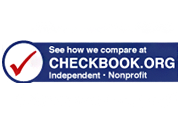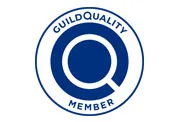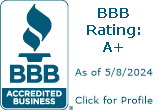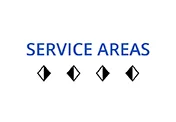How Do You Know When You Need A New Roof?
In the hustle and bustle of daily life, how often do you inspect the home that protects you from the elements? It’s all many of us can do to keep tabs on when the vacuuming needs doing and the fence needs painting– the less obvious things are often entirely off the radar until the worst happens.
Luckily, it’s not too hard to inspect your roof a couple times a year for damage and wear. Here’s a quick way to do it.
First things, first: inspect the ceilings and walls of your home for water damage. If there’s already a problem, that’s where it will be most obvious. Not just circular stains on the ceiling. Check behind furniture and bookcases for tell-tale mold spots which may indicate water inside the walls.
Next, go out to the edge of your property or across the street and really look at your roof. Are the shingles sagging or lifting? Are there any sags in the roof itself, which may indicate a problem with the decking? Are the gutters or flashing coming away from the house?
If you have cedar shakes, you may notice them splitting, which is a common sign of aging. Or, if you’re in a shady yard, you may notice moss on the roof. Moss will absorb moisture and rot the material under it– you should deal with it as soon as you notice it.
If you have tile or slate, see if you see any cracked or loose ones, but don’t try to fix it yourself. Tile and slate are very fragile when walked upon, and require special equipment to fix them without damaging the others.
A roof is one of the most important parts of your home, protecting you and your belongings from the elements. However, like any part of your home, a roof doesn’t last forever. Over time, exposure to weather, wear and tear, and aging materials can compromise its integrity. Knowing when you need a new roof is crucial to avoid costly damage and maintain the safety and comfort of your home.
Here’s additional information, key signs to watch for, and tips to help you determine whether it’s time to replace your roof.
1. Age of Your Roof
The age of your roof is one of the first factors to consider. Most roofing materials have a general lifespan:
-
Asphalt Shingles: 20-30 years
-
Metal Roofing: 40-70 years
-
Wood Shingles/Shakes: 25-30 years
-
Clay or Concrete Tiles: 50-100 years
-
Slate Roofing: 75-200 years
If your roof is nearing the end of its expected lifespan, it’s a good idea to schedule an inspection with a local roofer. Even if it looks fine from the ground, older roofs are more susceptible to hidden damage and may no longer provide adequate protection.
2. Curling, Cracked, or Missing Shingles
Asphalt shingles are the most common roofing material, and they often show visible signs of wear as they age. Look for:
-
Curling shingles: Edges may curl upward or the middle may bubble, indicating weathering and loss of structural integrity.
-
Cracked shingles: These are often caused by wind or temperature fluctuations.
-
Missing shingles: If you notice bare spots on your roof, it’s a sign that the protective barrier has been compromised.
While a few damaged shingles can often be replaced, widespread issues may indicate the need for a complete roof replacement.
3. Granules in the Gutters
Asphalt shingles are coated with granules that protect them from UV rays and provide fire resistance. Over time, these granules can wear away and collect in your gutters or downspouts. If you notice an excessive amount of granules, it’s a sign that your shingles are deteriorating and your roof may be nearing the end of its life.
4. Sagging Roof
A sagging roof is a serious problem that indicates structural issues. This could be caused by:
-
Water damage weakening the roof’s underlying structure
-
Rotting wood or compromised supports
-
Excess weight from accumulated snow or debris
If your roof appears to sag or dip, it’s important to address the issue immediately to prevent a potential collapse.
5. Leaks and Water Damage
Water damage is one of the most obvious signs that your roof needs attention. Check for:
-
Water stains on ceilings or walls: These may appear as brown or yellow discoloration.
-
Dripping water: Active leaks during rainstorms are a clear indication of a problem.
-
Mold or mildew growth: Persistent moisture can lead to mold, which poses health risks.
Even small leaks can cause significant damage over time, so it’s essential to address them promptly.
6. Damaged Flashing
Flashing is the material (usually metal) that seals and protects roof joints, such as around chimneys, skylights, and vents. If the flashing is cracked, bent, or missing, water can seep into these vulnerable areas. Older homes may have flashing made of cement or tar, which is less durable and more prone to failure over time. Upgrading to metal flashing during a roof replacement can provide better protection.
7. Daylight Through the Roof Boards
If you can see daylight coming through the roof boards in your attic, it’s a clear sign that your roof is compromised. While inspecting your attic, also look for water stains, streaks, or signs of moisture. These issues indicate that your roof is no longer providing a solid barrier against the elements.
8. Increased Energy Bills
A damaged roof can affect your home’s energy efficiency. If your heating or cooling bills have been steadily increasing, it could be due to poor insulation caused by gaps, leaks, or aging roofing materials. A new roof with proper insulation can help regulate your home’s temperature and reduce energy costs.
9. Storm Damage
Severe weather events, such as hailstorms, high winds, or heavy snowfall, can cause significant damage to your roof. After a major storm, it’s important to inspect your roof for:
-
Dented or cracked shingles
-
Missing shingles
-
Damage to flashing or gutters
Even if damage isn’t immediately visible, a professional inspection can identify hidden issues that may lead to problems later on.
10. Moss, Algae, or Mold Growth
While moss and algae may seem like minor cosmetic issues, they can cause serious damage over time. Moss holds moisture against the roof surface, leading to rot and decay. Algae can weaken shingles and reduce their lifespan. Regular cleaning and maintenance can help, but if the problem is widespread, it may be time to consider a roof replacement.
11. Frequent Repairs
If you find yourself constantly patching leaks or replacing shingles, it may be more cost-effective to invest in a new roof. Frequent repairs can add up quickly and may not address underlying issues. A new roof provides long-term peace of mind and eliminates the hassle of ongoing maintenance.
12. Outdated Appearance
A roof that looks worn or outdated can detract from your home’s curb appeal and reduce its resale value. If you’re planning to sell your home, a new roof can be a worthwhile investment that attracts buyers and boosts your property’s marketability.
What to Do if You Suspect You Need a New Roof
If you’ve noticed any of these signs, Schedule a Professional Inspection with Style Roofing: As Northern Virginia’s leading roofing contractor we can quickly assess the condition of your roof and provide recommendations. We’ll look for visible and hidden damage and help you determine whether replacement is the best option.
Your roof plays a vital role in protecting your home and ensuring your family’s safety. Recognizing the signs of a failing roof and addressing them promptly can save you from costly repairs and potential damage. Regular inspections, maintenance, and timely replacements are key to keeping your roof in top condition. If you’re unsure about your roof’s condition, don’t hesitate to give us a call. A well-maintained roof not only enhances your home’s functionality but also adds to its beauty and value.
For all your roof replacement needs, and to schedule a free estimate call Style Roofing. (703) 754-9906











